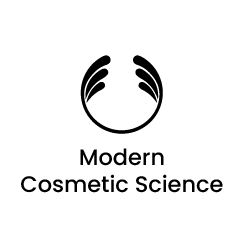An integrated experimental and theoretical approach to probe Cr(VI) uptake using decorated halloysite nanotubes for efficient water treatment
*
Corresponding authors
a
Department of Chemistry, School of Natural Sciences, National University of Sciences and Technology, H-12, Islamabad, Pakistan
b
Department of Chemistry, Faculty of Science, University of Ostrava, 30. Dubna 22, Ostrava 701 03, Czech Republic
E-mail:
sonia.zulfiqar@osu.cz, zulfiqar@iastate.edu
c
Department of Chemical and Biological Engineering, Iowa State University, Sweeney Hall, 618 Bissell Road, Ames, Iowa 50011, USA
E-mail:
ecochran@iastate.edu
d
POLYMAT, Physical Chemistry Department, Faculty of Pharmacy, University of the Basque Country UPV/EHU, 01006 Vitoria-Gasteiz, Spain
e
Department of Chemistry, Quaid-i-Azam University, Islamabad, Pakistan
Abstract
Halloysite nanotubes (HNTs) were surface functionalized using four distinct chemical moieties (amidoxime, hydrazone, ethylenediamine (EDA), and diethylenetriamine (DETA)), producing modified HNTs (H1–H4) capable of binding with Cr(VI) ions. Advanced techniques like FTIR, XRD, SEM, and EDX provided evidence of the successful functionalization of these HNTs. Notably, the functionalization occurred on the surface of HNTs, rather than within the interlayer or lumen. These decorated HNTs were effective in capturing Cr(VI) ions at optimized sorption parameters, with adsorption rates ranging between 58–94%, as confirmed by atomic absorption spectroscopy (AAS). The mechanism of adsorption was further scrutinized through the Freundlich and Langmuir isotherms. Langmuir isotherms revealed the nearest fit to the data suggesting the monolayer adsorption of Cr(VI) ions onto the nanotubes, indicating a favorable adsorption process. It was hypothesized that Cr(VI) ions are primarily attracted to the amine groups on the modified nanotubes. Quantum chemical calculations further revealed that HNTs functionalized with hydrazone structures (H2) demonstrated a higher affinity (interaction energy −26.33 kcal mol−1) for the Cr(VI) ions. This can be explained by the formation of stronger hydrogen bonds with the NH moieties of the hydrazone moiety, than those established by the OH of oxime (H1) and longer amine chains (H3 and H4), respectively. Overall, the findings suggest that these decorated HNTs could serve as an effective and cost-efficient solution for treating water pollution.

Supplementary files
Article information
- DOI
- https://doi.org/10.1039/D3RA07675J
- Article type
- Paper
- Submitted
- 09 Nov 2023
- Accepted
- 08 Jan 2024
- First published
- 18 Jan 2024
RSC Adv., 2024,14, 2947-2960
Permissions
An integrated experimental and theoretical approach to probe Cr(VI) uptake using decorated halloysite nanotubes for efficient water treatment
S. N. Ahmad Shah, S. Zulfiqar, F. Ruipérez, M. Rafique, M. Iqbal, M. J. Forrester, M. I. Sarwar (Late) and E. W. Cochran,
RSC Adv., 2024, 14, 2947
DOI: 10.1039/D3RA07675J
This article is licensed under a
Creative Commons Attribution-NonCommercial 3.0 Unported Licence. You can use material from
this article in other publications, without requesting further permission from the RSC,
provided that the correct acknowledgement is given and it is not used for commercial purposes.
To request permission to reproduce material from this article in a commercial publication,
please go to the Copyright Clearance Center request page.
If you are an author contributing to an RSC publication, you do not need to request permission
provided correct acknowledgement is given.
If you are the author of this article, you do not need to request permission to reproduce figures
and diagrams provided correct acknowledgement is given. If you want to reproduce the whole
article in a third-party commercial publication (excluding your thesis/dissertation for which
permission is not required) please go to the Copyright
Clearance Center request page.
Read more about how to correctly acknowledge RSC content.


